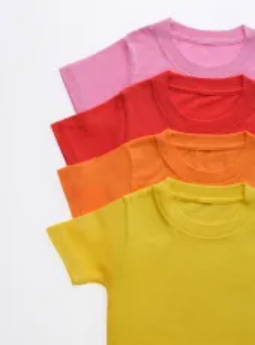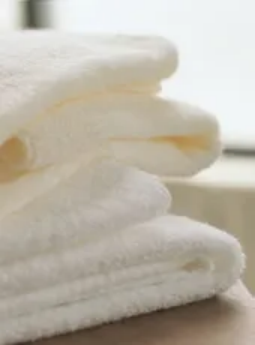Vortex spinning is one of the hottest new spinning technologies in recent years.
Compared with traditional ring spinning and rotor spinning, its characteristics are very distinctive.
One is high speed.
It is currently the fastest new spinning technology in the world. World-famous textile machinery companies such as Murata and Rieter have launched high-speed machines with a spinning speed of 550 meters per minute. type. This speed is 27 times that of traditional ring spinning.
The second is low hairiness.
Due to the bundling principle of vortex spinning, there are very few floating fibers exposed on the surface of the yarn, and the yarn finish is comparable to that of compact spinning. The fabric’s resistance to pilling is also particularly excellent.
This feature also brings benefits to subsequent sizing and weaving production. End breaks are reduced, efficiency is improved, and the production environment is cleaner.
Third, there is no latitudinal slope.
Vortex spinning uses false twist technology, and the yarn has no actual twist. The knitted fabric produced has almost no weft deviation and has good dimensional stability.
Rieter J20 air jet vortex spinning machine
Vortex spinning also has the advantages of small area, labor saving, short process and fast response.
Due to the above advantages, the construction of vortex spinning factories has become a hot topic.
According to statistics, there are currently about 5,000 vortex spinning machines in the world. Equipment, of which China has a production capacity of 3,500 units, which is approximately equivalent to a ring spinning production capacity of 9 million spindles.
Although the production capacity of vortex spinning has increased rapidly, for a long time, its product structure has been relatively It is monotonous, and there is almost only one variety on the market – viscose vortex spinning 30/40 count yarn.
This is related to the low awareness and acceptance of vortex spinning products in the early market, and also to the yarn forming principle of vortex spinning.
Vortex spinning has particularly high requirements for spinning raw materials, especially the fibers with high length uniformity and good Better spinnability.
Therefore, most vortex spinning factories choose to use viscose to produce ordinary specifications of yarn.
However, with the accumulation of applications in all aspects of the entire industry chain, innovations continue to emerge. In recent years, new vortex spinning products have emerged one after another, which is refreshing.
Polyester followed closely and became one of the mainstream fibers for vortex spinning.
Due to China’s decades of accumulation in differentiated research on polyester, various differentiated vortex spinning Yarn soon became available.
Pure polyester vortex spinning yarn,
Functional vortex spinning Yarn,
Ultra-fine denier vortex spinning yarn,
Polyester-viscose blended vortex spinning yarn…
The production of pure cotton products by vortex spinning has always been expected by the industry, but it has always been a difficulty. With the support of textile machinery equipment manufacturers, well-known enterprises such as Jiangsu Yueda, Dezhou Huayuan, and Tianhong Textile have made unremitting efforts to tackle the problem. Currently, vortex spinning cotton series yarns have become routine varieties in many enterprises. Lao Wang tried on a T-shirt produced by pure cotton vortex spinning. It felt good and quite comfortable!

Suzhou Jingyi and Pulutong took advantage of the low hairiness characteristics of vortex spinning yarns to develop sizing-free warp yarns, which was also a successful case many years ago.
Domestic Tianzhihua, Shixiang, Hangzhou Aohua, Hengfeng, Chinatex Jinwei, Huafei, and Intel A large number of companies such as Si have been committed to the development of vortex spinning varieties for many years, and have tried almost all optional new fibers, such as lyocell, modal, polyester, nylon, acrylic, etc., as well as various functionally differentiated fibers, expanding The application fields of this type of products.
In principle, vortex spinning uses a bundled yarn forming principle, and the yarn has a sheath-core structure. This feature should be particularly suitable for the development and production of core-spun yarn.
The vortex spinning equipment launched by Japan’s Murata Company in the early years also had this option. However, because the spinning speed is too high, it is very difficult to control the core filament and yarn, and many companies are discouraged.
But Hangzhou Aohua Company rose to the challenge. The core-spun yarn they developed has high covering properties, stable structure, the core yarn is not easy to peel off and exposed, and has a unique style. The company’s recently successfully developed new antibacterial and antiviral material yarn has also become a hot topic in the current market.
The warp-elastic denim fabric recently developed by Dezhou Huayuan and Lanxi Xinlan Textile and other companies is an application of vortex spinning yarn.Use new breakthroughs.
Using vortex spinning to produce colored yarn is also a major innovation for Chinese textile companies.
Huzhou Weida Vortex Spinning Series Yarn
Due to the short process flow of vortex spinning, it can be easily adapted to the needs of fast pace and small varieties of colored spinning. In the development and production of colored spinning Yarn has special advantages.
Zhejiang Huzhou Weida and Jinping Textiles use a variety of colored fibers such as cotton, linen, silk, wool, cashmere, viscose, etc. to produce colored yarns. Greatly favored by the market. The hemp series vortex-spun colored yarn developed by Weida is a well-known product in the industry.
The application scope of vortex spinning yarn has also expanded to industrial fields. A company that did not want to be named said that they are developing fiberglass vortex spinning yarn, which is eye-catching!
To summarize.
The raw materials of vortex spinning have expanded from the original single viscose fiber to polyester, nylon, nitrile, cotton, wool, silk and linen.
The spinning count of vortex spinning has been expanded from the original 30/40 to the range of 10-80.
The process route of vortex spinning has been extended to color spinning and core wrapping.
The application scope of vortex spinning yarn has also expanded from underwear and T-shirts to home textiles, denim, industrial use, Medical and many other fields.

Vortex spinning yarn development has shown accelerated innovation and full bloom.
</p








